Concussion and Brain Injury in Students, Who needs to know? Concussion is a mild Traumatic Brain Injury (TBI). A TBI during childhood may affect brain development. Children may experience changes in their health, thinking, and behavior that affect learning, self-regulation, and social participation, all of which are important to becoming a productive adult. Proactive teamwork, quick response and effective communication are essential to help a child after brain injury to Return to Learn and Return to Play. cdc.gov/traumatic-brain-injury Word Document File
 Go Back to Play After a Concussion: This is a concussion return to play manual created for student-athletes who do not have access to an athletic trainer to guide them through the Return To Learn (RTL) process. This manual follows the RTP process required by the Tennessee state concussion law. This resource is a way for parents or coaches to track and document the progress of their athletes. Vanderbilt Sports Concussion Center
Go Back to Play After a Concussion: This is a concussion return to play manual created for student-athletes who do not have access to an athletic trainer to guide them through the Return To Learn (RTL) process. This manual follows the RTP process required by the Tennessee state concussion law. This resource is a way for parents or coaches to track and document the progress of their athletes. Vanderbilt Sports Concussion Center
Signs & Symptoms
Age Specific Patient Educational Tools:
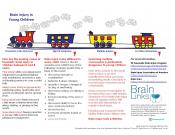 Brain Injury in Young Children: Refer to this tool to learn more about the signs and symptoms and the effects of multiple brain injuries for children under age five. English and in Español.
Brain Injury in Young Children: Refer to this tool to learn more about the signs and symptoms and the effects of multiple brain injuries for children under age five. English and in Español.
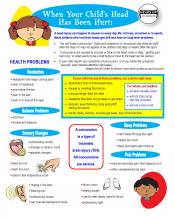 Older Child's Signs & Symptoms: Refer to this tool to learn more about health problems, behavior changes, thinking difficulties, and communication changes associated with concussions, as well as when to reconsult a doctor. English and in Español.
Older Child's Signs & Symptoms: Refer to this tool to learn more about health problems, behavior changes, thinking difficulties, and communication changes associated with concussions, as well as when to reconsult a doctor. English and in Español.
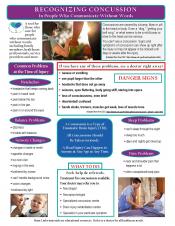 Recognizing Concussion in People Who Communicate Without Words: English and in Español.
Recognizing Concussion in People Who Communicate Without Words: English and in Español.
A Guide To Possible Changes After Brain Injury: For Young Children Ages 7 and Under. This guide was designed to help parents and caregivers watch for changes that may follow a brain injury in young children. Changes after brain injury may happen even years after a child’s treatment ends, whether they completed rehabilitation, stayed at the hospital, etc. This guide addresses changes and gives tips for keeping your child’s brain healthy throughout their life. Keep this guide handy in case there are questions or concerns. You may never need this, but it will be helpful if your child does develop challenges. PDF and Text files in English. Document Rationale
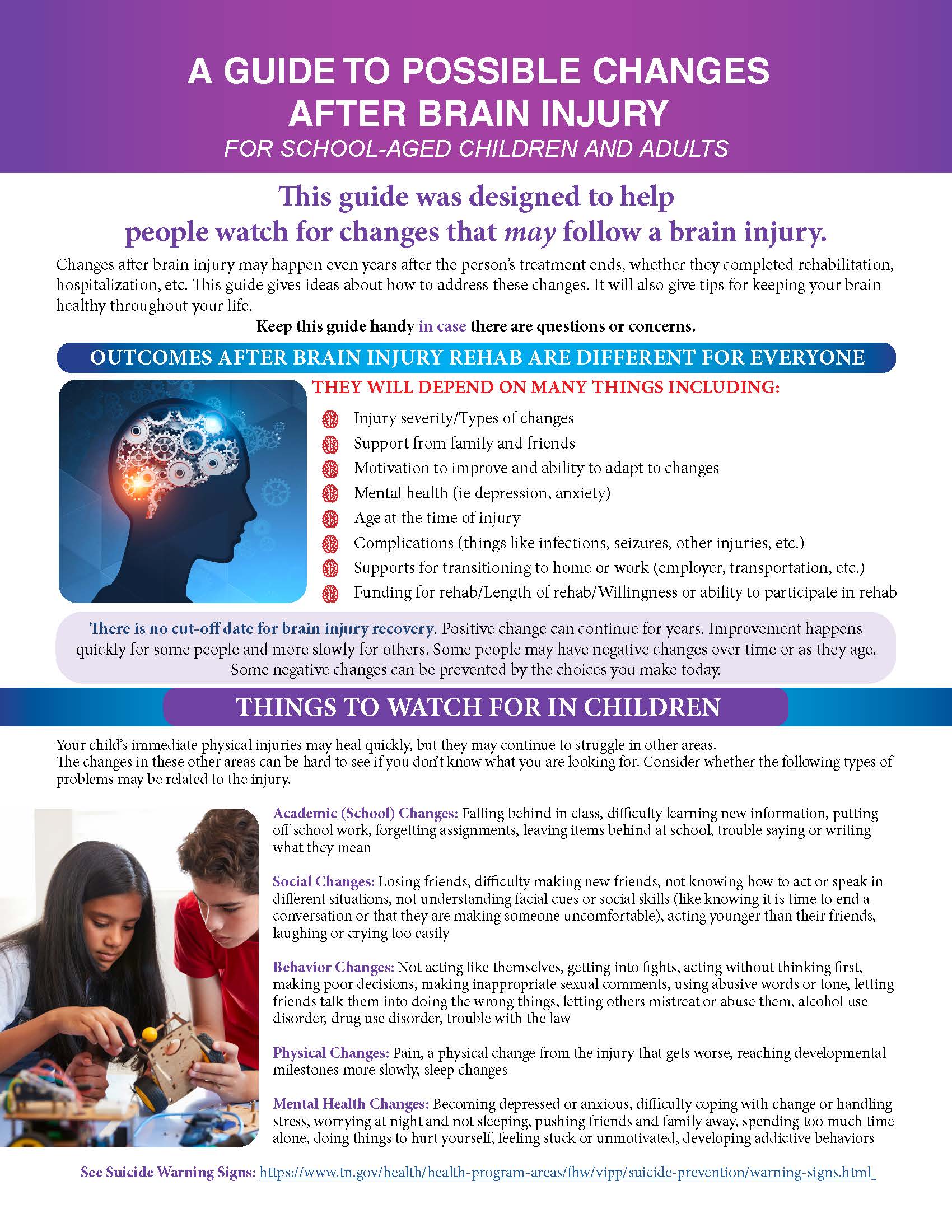 A Guide To Possible Changes After Brain Injury: For School-Aged Children & Adults: By design, the Guide is best when distributed by rehabilitation personnel in inpatient and outpatient therapy programs and by medical personnel in trauma units, pediatrician’s offices, family practices, neurology offices, surgical offices, and other specialty offices. It is meant to be given to anyone who has sustained a diagnosed brain injury, as well as anyone who sustained a significant trauma where they may experience brain injury symptoms and downstream consequences; even if they do not show early symptoms or early symptoms seem to have cleared. English and in Español
A Guide To Possible Changes After Brain Injury: For School-Aged Children & Adults: By design, the Guide is best when distributed by rehabilitation personnel in inpatient and outpatient therapy programs and by medical personnel in trauma units, pediatrician’s offices, family practices, neurology offices, surgical offices, and other specialty offices. It is meant to be given to anyone who has sustained a diagnosed brain injury, as well as anyone who sustained a significant trauma where they may experience brain injury symptoms and downstream consequences; even if they do not show early symptoms or early symptoms seem to have cleared. English and in Español

When Concussion Signs Are Not Going Away: Signs, symptoms and danger signs, plus what to look for over time and where/how to seek help for symptoms that aren't going away. Contact us for more information: tbi@tndisability.org
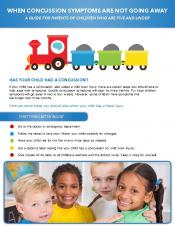 For Children Five and Under. English and in Español.
For Children Five and Under. English and in Español.
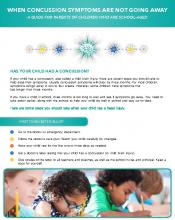 For School-Aged Children. English and in Español.
For School-Aged Children. English and in Español.
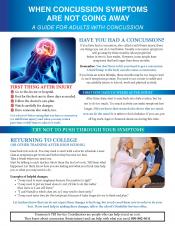 For Adults. English and in Español.
For Adults. English and in Español.

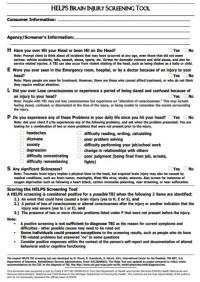
Yearly screening: Recommend using the HELPS Brain Injury Screening Tool OR add questions to the annual health history intake forms.
Example: Circle or provide checkboxes with a space for them to explain.
Ask: Has your child had an injury? Yes No
Cause of injury: Fall Car/motor vehicle accident Sports related other
If Yes: Did your child lose consciousness or become dazed? Yes No Not sure
Please explain: __________________________________________________
The HELPS TBI screening tool was developed by M. Picard, D. Scarisbrick, R. Paluck, 9/91, International Center for the Disabled, TBI-NET, U.S. Department of Education, Rehabilitation Services Administration, Grant #H128A00022. The Helps Tool was updated by project personnel to reflect recent recommendations by the CDC on the diagnosis of TBI.
![]() Symptom Tracker: Track Symptoms, pain level changes, what provokes and what helps. Good information to take back to the healthcare provider.
Symptom Tracker: Track Symptoms, pain level changes, what provokes and what helps. Good information to take back to the healthcare provider.
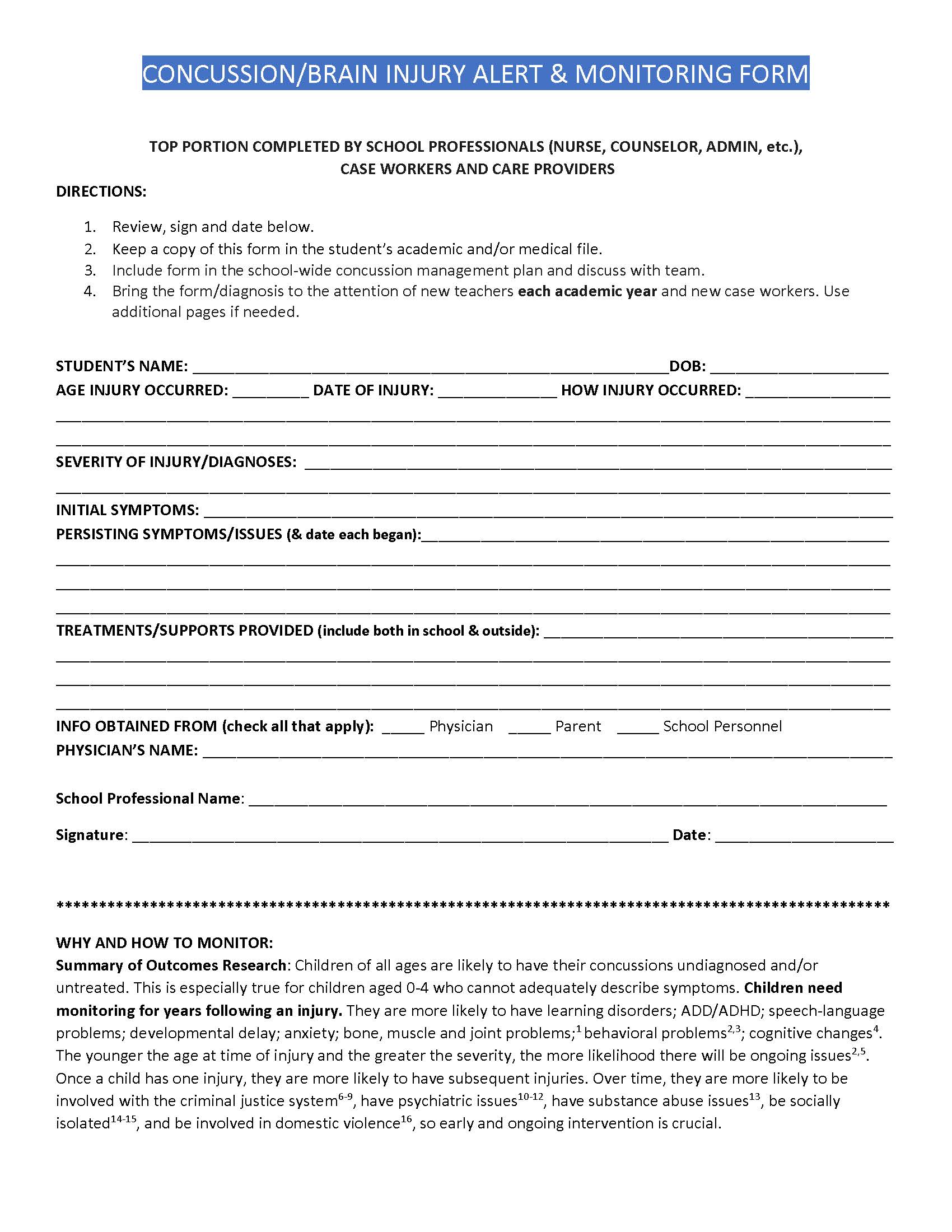 Concussion-Brain Injury Alert & Monitoring Form: For use in academic, school nurse or case manager file to serve as a reminder of the TBI. Also alerts others who may start working with the child.
Concussion-Brain Injury Alert & Monitoring Form: For use in academic, school nurse or case manager file to serve as a reminder of the TBI. Also alerts others who may start working with the child.

 The 5 Types of Concussion and 2 Modifying Factors Infographic was created to reflect the update to the model by researchers at the University of Pittsburgh Medical Center based on extensive research previously developed by them and others. Word Document File.
The 5 Types of Concussion and 2 Modifying Factors Infographic was created to reflect the update to the model by researchers at the University of Pittsburgh Medical Center based on extensive research previously developed by them and others. Word Document File.

Concussion Resources
Concussion and Brain Injury in Students, Who needs to know? Concussion is a mild Traumatic Brain Injury (TBI). A TBI during childhood may affect brain development. Children may experience changes in their health, thinking, and behavior that affect learning, self-regulation, and social participation, all of which are important to becoming a productive adult. Proactive teamwork, quick response and effective communication are essential to help a child after brain injury to Return to Learn and Return to Play. cdc.gov/traumatic-brain-injury Word Document File
 Go Back to Play After a Concussion: This is a concussion return to play manual created for student-athletes who do not have access to an athletic trainer to guide them through the Return To Learn (RTL) process. This manual follows the RTP process required by the Tennessee state concussion law. This resource is a way for parents or coaches to track and document the progress of their athletes. Vanderbilt Sports Concussion Center
Go Back to Play After a Concussion: This is a concussion return to play manual created for student-athletes who do not have access to an athletic trainer to guide them through the Return To Learn (RTL) process. This manual follows the RTP process required by the Tennessee state concussion law. This resource is a way for parents or coaches to track and document the progress of their athletes. Vanderbilt Sports Concussion Center
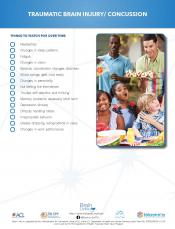 Things to Watch For Over Time: This sheet will help you learn what symptoms to keep an eye out for after a concussion.
Things to Watch For Over Time: This sheet will help you learn what symptoms to keep an eye out for after a concussion.
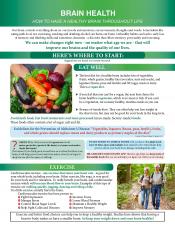 Brain Health: How to Have a Health Brain Throughout Life: By design provides research-based tips for creating a healthy brain, regardless of age. This guide was originally developed to help people with brain injuries recover to the fullest extent possible and to help them prevent or minimize potential negative changes as they age. However, it was quickly realized that the information in Brain Health is beneficial for everyone. English and Español.
Brain Health: How to Have a Health Brain Throughout Life: By design provides research-based tips for creating a healthy brain, regardless of age. This guide was originally developed to help people with brain injuries recover to the fullest extent possible and to help them prevent or minimize potential negative changes as they age. However, it was quickly realized that the information in Brain Health is beneficial for everyone. English and Español.
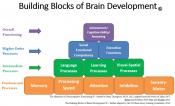 Building Blocks of Brain Development: Learn about the Building Blocks of Brain Development by the Colorado Kids with Brain Injury. The building blocks included represent typical areas of processing/learning and those that are commonly affected by brain injury.
Building Blocks of Brain Development: Learn about the Building Blocks of Brain Development by the Colorado Kids with Brain Injury. The building blocks included represent typical areas of processing/learning and those that are commonly affected by brain injury.

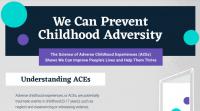 We Can Prevent Childhood Adversity Infographic
We Can Prevent Childhood Adversity Infographic
A new CDC infographic shows the impact of Adverse Childhood Experiences (ACEs) and how preventing ACEs can help create neighborhoods and communities where every child thrives. This infographic showcases data from the CDC-Kaiser Permanente ACE Study and recent findings to address the following questions:
- What are ACEs?
- How common are ACEs?
- How do ACEs affect our lives?
- How do ACEs affect our society?
- What can be done about ACEs?
ACEs are potentially traumatic events in childhood (0-17 years), such as neglect and experiencing or witnessing violence. However, types of early adversity can be stopped before they start.
Safe, stable, and nurturing relationships and environments have a positive impact in creating positive childhood experiences. Their benefits can last a lifetime.
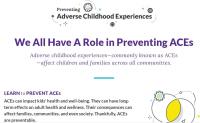 CDC Preventing Adverse Childhood Experiences Training Modules: We All Have A Role in Preventing ACEs. Adverse childhood experiences—commonly known as ACEs
CDC Preventing Adverse Childhood Experiences Training Modules: We All Have A Role in Preventing ACEs. Adverse childhood experiences—commonly known as ACEs
—affect children and families across all communities.
LEARN to PREVENT ACEs: ACEs can impact kids' health and well-being. They can have long-term effects on adult health and wellness. Their consequences can affect families, communities, and even society. Thankfully, ACEs are preventable.
Take the Trainings: These trainings will help you understand, recognize, and prevent ACEs. Get the insights you need to create healthier, happier childhoods for kids today and bright futures for adults tomorrow.
 CDC Online Training for Healthcare Professionals: Learn Steps to Improve the Care of Your Pediatric Patients with mTBI.
CDC Online Training for Healthcare Professionals: Learn Steps to Improve the Care of Your Pediatric Patients with mTBI.


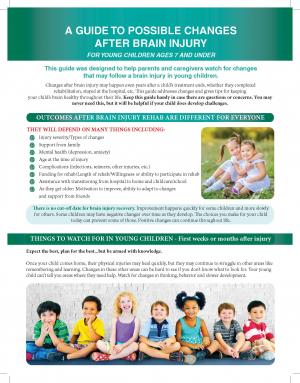
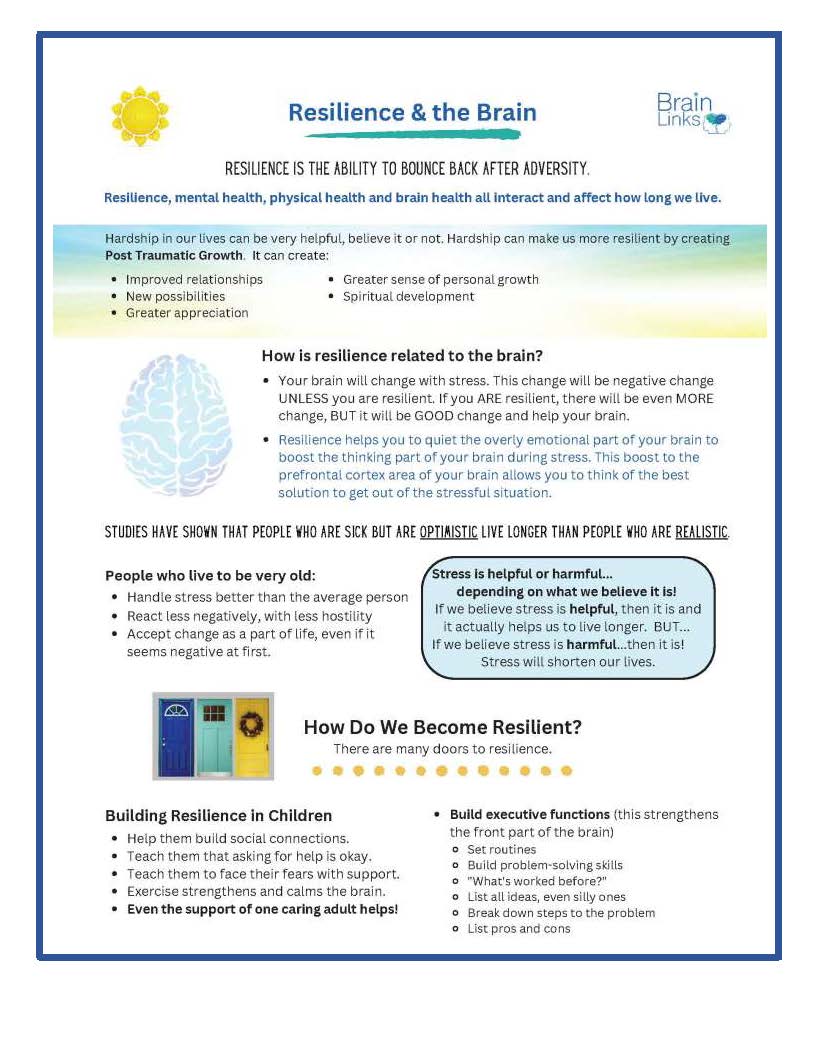 Resilience and the Brain
Resilience and the Brain